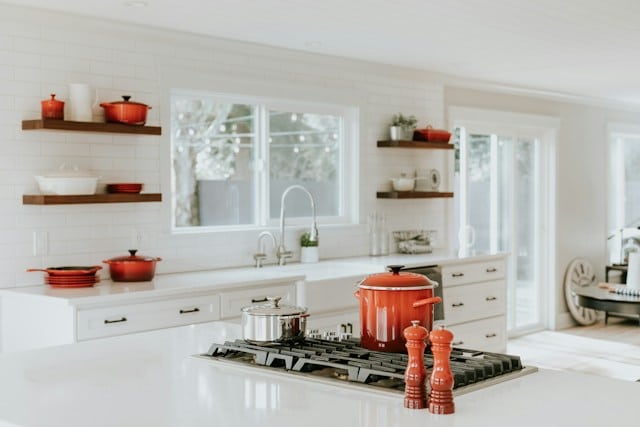How Can You Design a Sustainable Off-Grid Tiny Home for Year-Round Living?

Living in a tiny home is a lifestyle choice that’s gaining popularity for its minimalistic appeal and smaller environmental footprint. But how do you adapt this concept for year-round living, especially off-grid? Today, we will guide you on how to design a sustainable off-grid tiny home suitable for all seasons.
Understanding the Basics of a Tiny Home
Before delving into design specifics, it’s essential to understand what a tiny home is and what it signifies. In essence, a tiny home is a dwelling unit that ranges from 100 to 400 square feet. This limited space demands creativity and ingenuity to fit all life’s necessities.
En parallèle : What’s the Best Way to Integrate Indoor-Outdoor Flow in a Bungalow Renovation?
Living in a tiny home is more than just downsizing, it’s about embracing a simpler life and reducing unnecessary consumption. It represents a shift towards conscious living and sustainability, a lifestyle choice that’s not just trendy but also environmentally responsible.
Going off-grid means severing ties with public utilities, thus promoting self-sufficiency. Off-grid living in a tiny home magnifies this ethos, as it entails making the most of limited resources and space. This approach is not only sustainable but could also be economically beneficial in the long run.
Cela peut vous intéresser : How to Build a Durable and Stylish Outdoor Playhouse That Blends with Your Garden?
Elements of a Sustainable Off-Grid Tiny Home
To create a sustainable off-grid tiny home fit for year-round living, you need to incorporate several key elements. These include energy solutions, water systems, insulation and heating, and clever spatial design.
Energy Solutions
Energy is a primary concern when living off-grid. Conventional sources like the city grid are inaccessible, making renewable energy the go-to option. Solar panels are the most common choice, thanks to their efficiency and decreasing cost. Wind and hydro power could also be considered, depending on the location of your tiny home.
For year-round living, you’ll need a well-planned energy system. This should include a battery bank for storing power, charge controller to manage power flow, and an inverter to convert DC to AC power. Additionally, energy-efficient appliances and LED lighting can help limit energy use.
Water Systems
Access to clean, safe water is another challenge for off-grid living. Rainwater harvesting systems, well or spring water can be viable options. It’s essential to incorporate a robust filtering and treatment system to ensure the water is safe for consumption.
For waste water, consider installing a composting toilet and a greywater system for reusing water from showers and sinks. These sustainable systems reduce water consumption and don’t require a sewer connection, making them ideal for off-grid living.
Insulation and Heating
Insulation is imperative for year-round comfort in a tiny home. It helps maintain a consistent indoor temperature, reducing the need for heating or cooling. Opt for high-quality insulation materials and pay special attention to insulating the roof and walls.
For heating, wood stoves are a popular choice since they provide ample heat and create a cozy atmosphere. But remember, safety is paramount, so the installation should be done properly. Also, consider a backup heating system, such as a propane heater, for exceptionally cold days.
Clever Spatial Design
Maximizing space is critical in a tiny home, even more so when living off-grid. Effective layout planning can make a small space functional and comfortable. Consider multipurpose furniture, like a bed that converts into a couch or a table that folds into a wall.
Storage space is another crucial aspect. Use the vertical space effectively and include storage options in unlikely places, like under the stairs or bed. Remember, every inch counts in a tiny home.
Building Materials and Design
The choice of building materials can significantly impact the sustainability of your tiny home. Opt for locally-sourced, recycled, or reclaimed materials to reduce the environmental impact and cost. For instance, reclaimed wood can add a unique rustic charm to your tiny home, while recycled metal can be used for the roof.
In terms of design, aim for simplicity and efficiency. Closed floor plans can help retain heat during winter, while large windows can provide natural light and ventilation. Also, consider incorporating outdoor living space to extend the function and feel of your tiny home.
Legal Considerations and Challenges
It’s essential to remember that while designing your sustainable off-grid tiny home, there are legal considerations and potential challenges. Zoning laws, building codes, and regulations vary widely and can affect where you can build and live in your tiny home.
Furthermore, off-grid living involves a learning curve. It requires you to adapt to a new lifestyle, learn how to manage resources effectively, and troubleshoot issues that may arise with your energy or water systems. However, with patience and perseverance, these challenges can be overcome, leading to a rewarding and sustainable way of life.
Designing a sustainable off-grid tiny home for year-round living might seem like a daunting task, but armed with the right knowledge and tools, it can be an achievable dream. The result? A cozy, self-sufficient home that aligns with your values of sustainability and minimalism, offering a unique way to experience the seasons and connect with nature.
Efficient Use of Space and Resources
One of the most important aspects of designing a sustainable off-grid tiny home is the efficient use of space and resources. This goes beyond just choosing multi-purpose furniture and space-saving storage options. It involves designing your home in such a way that it maximizes the use of natural resources, minimizes waste, and reduces the need for external inputs.
For instance, consider designing your tiny home to take advantage of natural light. This could mean positioning windows to capture the sun at different times of the day, or using skylights to bring light into the home. Not only does this reduce the need for artificial lighting, but it can also help heat your home in the colder months.
Similarly, think about how you can use natural ventilation to cool your home in the hotter months. This could involve strategically placing windows, vents, and doors to create a natural flow of air. You might also want to consider using plants to provide shade and cool the air around your home.
In terms of resources, consider how you can reduce, reuse, and recycle. This might involve using a composting toilet to turn waste into nutrient-rich compost, installing a greywater system to reuse water, or incorporating a rainwater harvesting system to supplement your water supply.
Overall, the key to efficient use of space and resources is thinking creatively and making the most of what nature provides.
Conclusion: Embracing Sustainability and Minimalism
Designing a sustainable off-grid tiny home for year-round living is undoubtedly a challenging endeavor. It requires careful planning and design, a good understanding of your resource needs, and a willingness to adapt and learn. However, the rewards can be immense.
By choosing to live in a sustainable off-grid tiny home, you are not only reducing your environmental footprint and living more sustainably, but also embracing a minimalist lifestyle. You’re choosing to forego unnecessary consumption and focus on what truly matters: a simpler, more conscious way of life.
Moreover, living off-grid allows you to connect with nature in a way that’s not possible with traditional living. It teaches you to appreciate and respect the resources that nature provides, and to use them wisely and efficiently.
In conclusion, designing a sustainable off-grid tiny home for year-round living is not just about building a small, energy-efficient home. It’s about creating a lifestyle that aligns with your values of sustainability and minimalism, and that allows you to live in harmony with nature, all year round.
